Utah County Birders Newsletter
|
 |
Contents
November Meeting
Upcoming Field Trips
Captain’s Log
Bird of the Month
Field Trip Report -
The Big Sit, Provo Airport Dike
Backyard Bird of the Month
October Hotline Highlights
NOVEMBER MEETING:
Thursday, November 14th, 2013 - 7:00 PM
Dr. Randy Larsen from BYU and Maggie Peters, raptor biologist from Dugway Proving Ground, will give a two-part presentation on grebe migration and fallout and wildlife images captured by game cameras used in research projects on Dugway and other study sites in Utah.
Meet at 7:00 PM at the Orem Public Library - 58 North State Street, Orem. We meet downstairs.
DECEMBER MEETING:
December 12, 2013 at 7pm we will prepare for and hand out assignments for the Utah County Christmas Bird Count. Dennis Shirley will do a bird refresher and quiz on birds that could be seen during the count. All are welcome to the meeting and to join our annual Christmas Bird Count.
Meet at 7:00 PM at the Orem Public Library - 58
North State Street, Orem. We meet downstairs.
23 November, 2013 (Sat): It's Our Annual Loon Loop and Winter Ducks Field Trip! 7:30am- afternoon. Meet at the parking lot at the mouth of Provo Canyon. We will start by checking out Deer Creek reservoir, and depending on what's being seen we'll go from there. We may end up at East Canyon Reservoir or Antelope Island. Weather dependent. If the roads/weather are bad that morning the field trip leader may choose to bird closer to home.
21 December,
2013 (Sat): Provo Christmas Bird Count
- This year the Provo Christmas Bird Count will be held on Dec 21st. We
will go over the areas and details at the Utah County Birders Meeting in
December. For more info contact Bryan Shirley -
bt_shirley@hotmail.com -
801-722-9346
4 January, 2013 (Sat): Payson Christmas
Bird Count - The Payson count will be on Jan 4. Great way to start
the new year! For more info contact Bryan Shirley -
bt_shirley@hotmail.com -
801-722-9346
We are actively recruiting people to lead local half-day field trips, any time,
any place. If you would like to lead a field trip or if you have any ideas for
this year’s field trips, please contact Bryan Shirley at -
bt_shirley@hotmail.com
November Captain’s Log: Hard
Questions
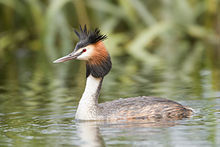 |
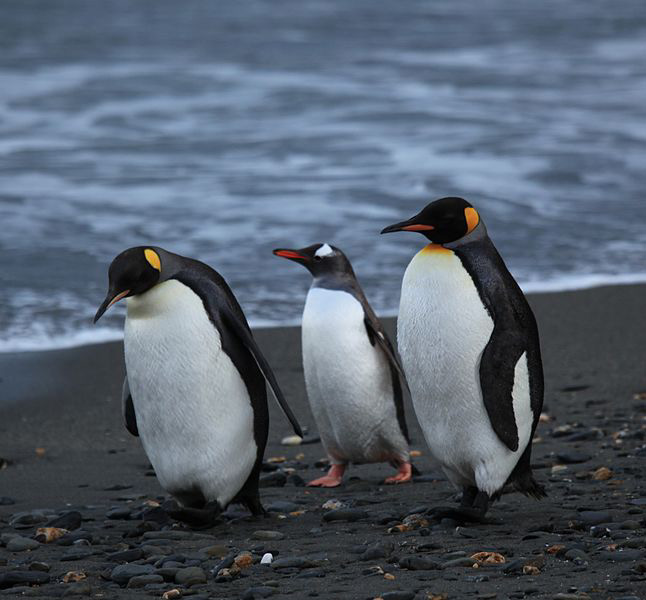 |
by Keeli Marvel
Birders get asked hard questions occasionally. Things like…why birds? Or…how did
you ever become the bird nerd you are today? I’ve been asked a few times what my
“hook bird” was. Obviously this question only comes from other birders as non
birders have no knowledge of this phenomenon until they experience it and become
birders themselves. I have a very hard time with this one. I guess I don’t fall
into the particular pattern of birder conversion. My hook bird was an entire
semester of ornithology class filled with learning about bird anatomy,
physiology, behavior, calls, and identification of birds. Following that
semester, I was hooked. It really took a couple of years after that to get fully
entrenched in the birding community, but I would definitely say that class was a
defining point in my life as a birder. When I look back on that year, though, I
don’t remember any bird particularly standing out.
Non birders will often ask me what my favorite bird is. When there’s a world
full of birds I haven’t even seen yet, I have a very hard time choosing just
one, and if you were to ask me twice, I’d probably give you a different answer
each time. However, for the sake of writing an article this month, I’ve narrowed
down my list of favorites to tell you about one I saw for the first time last
year- the Great crested grebe. Imagine the love child of a Western/Clark’s Grebe
and a Horned Grebe with a crazy hairdo, and you get the idea. The Great Crested
Grebe is the largest grebe that occurs in Europe and is found throughout Europe
and Asia with some reported breeding colonies in the southern hemisphere. The
Royal Society for the Protection of Birds (RSPB) describes the Great crested
grebe as “a delightfully elegant water bird with ornate head plumes”. Trust the
British to make a bird sound refined and elegant! I like grebes in general, but
they all seem kind of boring and pale in comparison to this species. While I’m
comfortable claiming this as my current favorite species, all it would take to
upset this species’ standing in my favorite bird ranking system would be a trip
south of the Equator. The possibilities are mind boggling when I think about
what my next favorite bird could be.
That brings me neatly to the next hard question: If you could see any bird in
the world, what would it be? There are so many bird species out there of whose
existence I’m not even aware of (and which I’m sure are equally ignorant of my
existence as well) that you would think this question would be equally hard for
me to answer. Surprisingly, it’s not. For whatever reason, my ultimate life bird
species I would like to see is penguins – any penguin species – in the wild. At
some point in my life, I would like to see penguins in the wild. I’m fascinated
by them. I recently attended a presentation at the American Ornithologists’
Union Conference in Chicago where a researcher from the Smithsonian discussed
his work on pigment in penguin feathers. Surprisingly, the yellow pigment found
in penguin feathers is structurally and chemically completely unlike any other
known yellow pigments found in birds. To put it another way, there are several
processes/means by which birds produce yellow feather pigment, and penguins do
it completely differently than everyone else. This is mind boggling! The more I
learn about them, the more fascinating I think they are.
Well I guess that wraps up this round of hard questions. As a birder do you
often get asked hard questions like these? How do you answer?
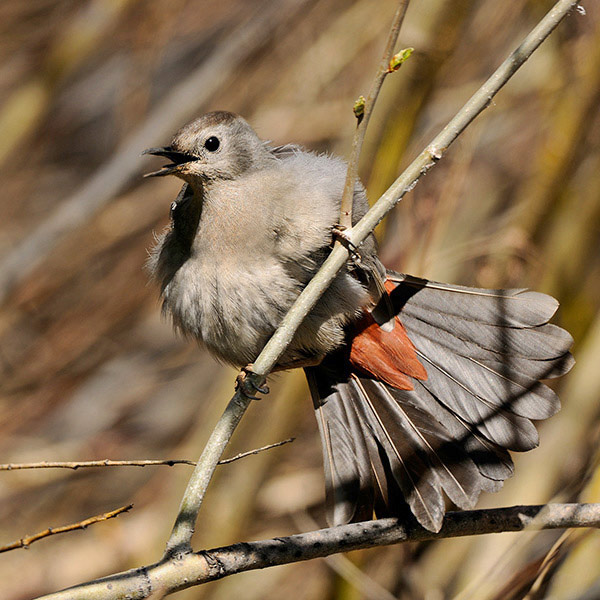 |
|
photo by John Crawley |
Gray Catbird
Dumetella carolinensis
by Alton Thygerson
How does one go about selecting and writing about a bird to be
featured in the newsletter? Several methods could be used, such as:
(1) a “hook” bird—the bird that caught your attention, made a lasting
impression, and moved you into birding (i.e., Eastern Meadowlark);
(2) a “pretty” bird with lots distinctive colors (i.e., Western Tanager);
(3) a bird never seen before but have hopes of adding it to your life list
(i.e., Boreal Owl);
(4) a bird you have become “calloused” to because you see it almost daily when
outdoors (i.e., Black-billed Magpie);
(5) a recently seen bird which was a surprise because it was unexpected (i.e.,
Gray Catbird); or
(6) a specie not previously featured in the newsletter. A list of past featured
birds can be found at:
http://www.utahbirds.org/ucb/BirdofMonth.html
I used selection method number five—a recently seen but an unexpected bird—the
Gray Catbird. I had just seen the Sabine’s Gull on Sandy Beach (end of River
Lane) and was birding my way back to the highway. At a stop on River Lane to
look and listen, a Gray Catbird popped up. This surprised me since I do not
recall seeing one on River Lane this late in the year. An eBird check to see who
reported a Gray Catbird on River Lane during 2013 showed reports from these
birders—Eric Huish, Merrill Webb, John Crawley, Keeli Marvel, Jeff Bilsky,
Martha Happ, Brenton Reyner, Jeff Cooper, and Dave Hanscom.
The bird’s name comes from its cat-like, mewing calls. The Gray Catbird has been
reported as imitating the vocalizations of over 40 bird species and several
sounds produced by machines and electronic devices. Some individuals can sing
two notes simultaneously. Its mimicking song resembles songs of thrashers or the
American Dipper. The mew call can be confused with calls of the Hermit Thrush or
the Spotted and Green-tailed Towhees.
Despite their being shy, Gray Catbirds tolerate human presence. To their credit,
they have the ability to recognize and remove eggs of the brood parasite, the
Brown-headed Cowbird.
Similar species a beginning birder may mistake for a Gray Catbird include the
Northern Mockingbird and the Crissal Thrasher.
Gray Catbird identification marks include:
• slender,
• overall slate gray color,
• large black eyes,
• reddish-brown undertail coverts,
• a fairly long, broad, slightly rounded black tail
• thin black cap,
• a flat-crown,
• straight black bill.
Gray Catbirds prefer thick, tangled vegetation along streams and swamps. Most
likely spots for finding this bird in Utah County are in Provo Canyon (Canyon
View Park, Vivian Park), South Fork, and the Lower Provo River Parkway (Oxbow to
Lakeshore Drive). They respond to pishing and can be coaxed into the open.
Sources:
American Museum of Natural History, Birds of North America (2011).
Pete Dunne’s Essential Field Guide Companion (2006).
Kaufman, Kenn. Lives of North American Birds (1996).
National Geographic Complete Birds of North America (2006).
If you would like to
write an article for the Bird of the Month, please contact
Eric Huish -
erichuish@gmail.com
Click here for past 'Birds of the Month'.
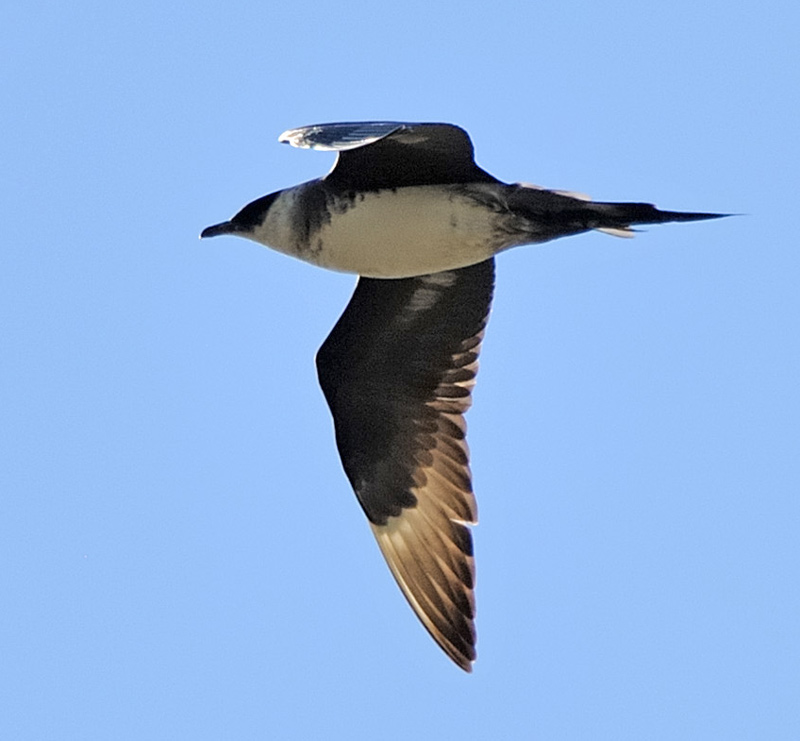 |
|
Best bird of the
day! A Parasitic Jaeger. |
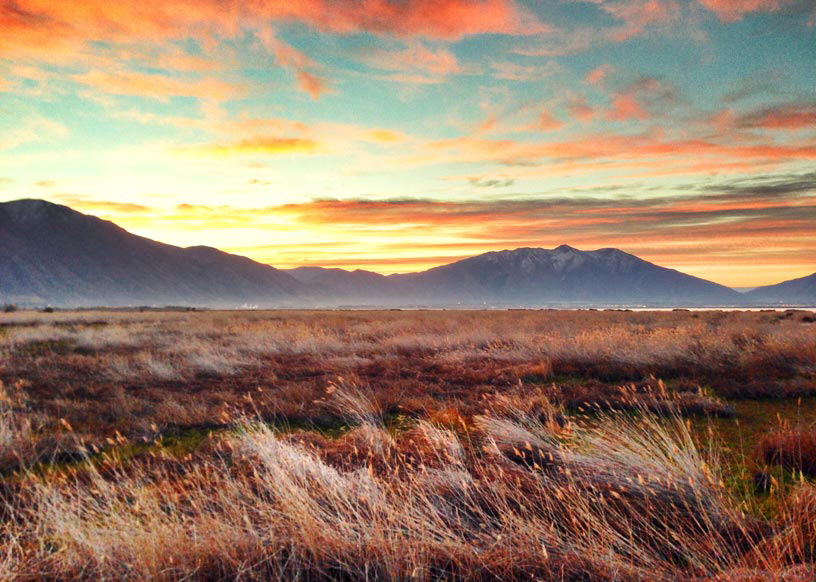 |
|
Our view
from the Sit Circle at Dawn. |
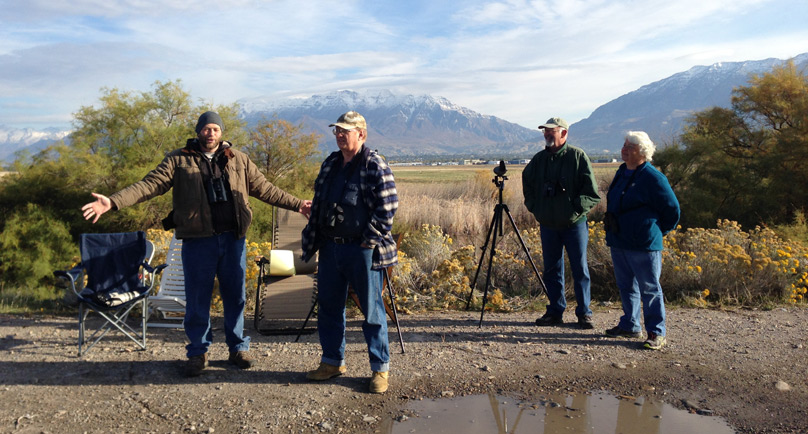 |
|
Some of the
morning sitters. |
Field Trip Report
The Big Sit - Provo Airport Dike - 12 October 2013
by Eric Huish
On a
Big Sit you pick a spot and spend the day sitting within a 17 foot circle and
only count birds you see from that one spot. Many people across the country
participate in 'The Big Sit!' on the second weekend of October every year.
This year's Provo Airport Dike Big Sit was covered continuously from 6:02 am to
7:53 pm. (13 Hours 50 Minutes). We sat at the Southwest Corner of the dike loop.
Low water levels and very large numbers of duck hunters all week long had me
convinced this year's sit would not be good. But it was our best sit ever! We
got 61 species! Breaking our previous record of 58 species (2007). Our 12 year
(12 day) Big Sit Life List is now at 117 species. We added 4 Big Sit Lifers this
year that we have never seen on any previous sits - Common Merganser, Parasitic
Jaeger, Violet-green Swallow and Green-tailed Towhee.
The best bird of the day was definitely an adult light morph Parasitic Jaeger.
At about 10:00 a.m. we saw a dark bird chasing a gull out over the lake. I
believe Keeli Marvel first spotted it. We all had our bins on it when it banked,
wings and tail spread, and we yelled out "Jaeger!" The bird then flew way out
into the middle of the lake and landed on the water. For the next two hours we
kept an eye on the distant dot. It flew a couple of times but wouldn't come
closer. Then at about 11:45 a.m. the jaeger flew right toward us, flew right
over us, then caught a thermal and started soaring in circles right above us. It
floated higher and higher until it was just a dot in the sky, then it
disappeared. We could not have asked for a better view! The Jaeger was a lifer
for almost everyone that was in the circle at that time. Very exciting.
There were several duck hunters in the morning but the birds didn't seem to
mind. The hunters were all friendly and some showed us the ducks they got.
Hunters brought in Northern Shoveler and Blue-winged Teal that we never saw from
our sit circle. Other misses included American Robin, Mourning Dove and
White-faced Ibis (seen from the sit spot the day before). Our last sighting of
the day was a Barn Owl. A great finish to a great day.
Sit Participants - Milt Moody, Carlos Caceres, Keeli Marvel, Keeli's friend
Mahauni, Jeff Cooper, Alona Huffaker, Robert Brown, John Crawley, Yvonne Carter,
Mark Thal, Ned Bixler, Doug Mead, Briant DiChellis, Cindy DiChellis, Sharee
Harrison, Stan & Jessica McShinsky, Tanner & Jules Poe, Eric Huish.
I would like to especially thank Ned Bixler and Doug Mead for volunteering to
lead the sit on the afternoon shift.
If
you'd like to know more about the Big Sit! rules or see how other Sit Circles
across the country did visit -
http://www.birdwatchersdigest.com/bwdsite/connect/bigsit/index.php?sc=migration
Our Big Sit List
Pied-billed Grebe, Eared Grebe, Western Grebe, Clark's Grebe, American White
Pelican, Double-crested Cormorant, Great Blue Heron, Black-crowned Night-Heron,
Canada Goose, Mallard, Green-winged Teal, Cinnamon Teal, Common Merganser, Ruddy
Duck, Osprey, Northern Harrier, Sharp-shinned Hawk, Cooper's Hawk, Red-tailed
Hawk, Merlin, American Kestrel, Ring-necked Pheasant, Virginia Rail,
American Coot, Sandhill Crane, Killdeer, American Avocet, Greater Yellowlegs,
Lesser Yellowlegs, Long-billed Dowitcher, Wilson's Snipe, Parasitic Jaeger,
Ring-billed Gull, California Gull, Franklin's Gull, Forster's Tern, Caspian
Tern, Rock Pigeon, Eurasian Collared-Dove, Barn Owl, Belted Kingfisher, Northern
Flicker, Black-billed Magpie, American Crow, Violet-green Swallow, Tree Swallow,
Barn Swallow, Black-capped Chickadee, Marsh Wren, European Starling, American
Pipit, Cedar Waxwing, Yellow-rumped Warbler, Green-tailed Towhee, Spotted
Towhee, Song Sparrow, White-crowned Sparrow, Red-winged Blackbird, Western
Meadowlark, House Finch, American Goldfinch
October 2013
Lyle Bingham - Payson
There are several Western Scrub-Jay and Spotted Towhee are in the "hollow". We also have two or three Ring-neck Pheasant roosters there too. I haven't seen pheasant hens since Spring.
Steve Carr - Holladay
Downy Woodpecker, pair using the peanut feeders.
Jeff Cooper - Pleasant Grove
Mine has to be the fly-over Ferruginous
Hawk. I doubt I'll see that again anytime soon.
Eric Huish - Pleasant Grove
Song Sparrow - A common bird I see everywhere but I seldom get one in my
yard.
Leila Ogden - Orem
I had a Spotted Towhee In my back yard.
Leena Rogers - Provo
It was a treat to have a very active Spotted Towhee visit our yard. Fun
to see it rooting around the base of the old pear tree.
Alton Thygerson - Provo
Western Scrub-Jay - Four coming to peanut feeder.
Report your favorite backyard
bird each month to Eric Huish at 801-360-8777 or erichuish@gmail.com
The Utah County Birders Newsletter is now online only.
We've decided to stop the regular paper mail version of the UCB Newsletter. This will save our club on Printing, Postage and Paper. If you would like an email notice each month when the Newsletter is posted online please send an email to Eric Huish at erichuish@gmail.com or subscribe to the ucbnet mailing list. To subscribe to ucbnet just send an e-mail to ucbnet-subscribe@utahbirds.org
We are willing to print the online version of the newsletter and mail it out to anyone who still wants a paper copy or who doesn't have internet access. If you know of anyone who enjoys the UCB Newsletter but doesn't have internet access please let Eric Huish or Keeli Marvel know and we will make sure they get a copy.